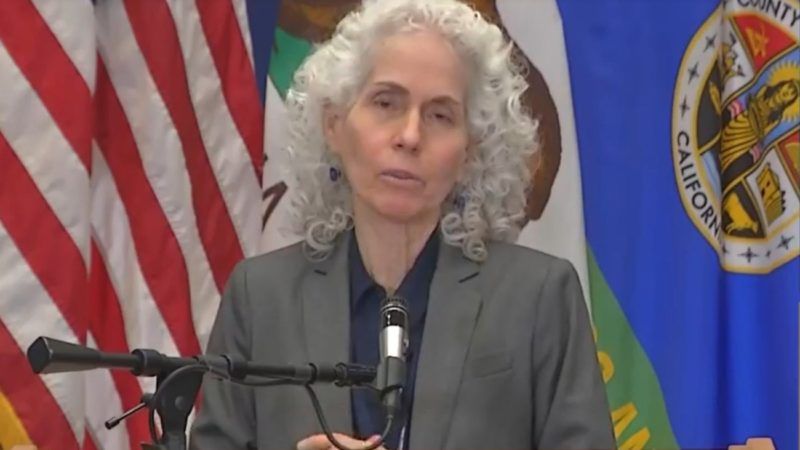Shouldn't COVID-19's Lethality Inform the Response to It?
Evidence that the virus is much less deadly than people feared weakens the case for maintaining lockdowns.

When she announced the startling results of a new COVID-19 study on Monday, Los Angeles County's top public health official emphasized that the number of infections far exceeds the official count of confirmed cases. She underplayed another important implication of the study: COVID-19 seems to be far less deadly than many people feared.
The way Department of Public Health Director Barbara Ferrer framed the study's results raises a question that policy makers across the country will confront as they consider when and how to loosen sweeping restrictions aimed at curtailing the COVID-19 epidemic. Will they be guided by emerging evidence, or will they use it to support the policies they already favored?
The Los Angeles County study, conducted by University of Southern California researchers in collaboration with Ferrer's department, tested a representative sample of 863 adults for antibodies to the virus in early April. About 4 percent of them tested positive, indicating that the number of adults in the county who had been infected by the virus was roughly 40 times the number of confirmed cases at the time.
Confirmed cases are limited to people who have tested positive for the virus, and testing so far has been skewed toward people with severe symptoms. Since people infected by the virus typically experience mild to no symptoms, it is not surprising that the official tally understates the number of infections, although the apparent size of the gap is striking.
"These results indicate that many persons may have been unknowingly infected and at risk of transmitting the virus to others," Ferrer said. "These findings underscore the importance of expanded [virus] testing to diagnose those with infection so they can be isolated and quarantined, while also maintaining the broad social distancing interventions."
Since the number of infections in Los Angeles County is much higher than the official numbers indicate, Ferrer told reporters, the risk of transmission is higher than expected, which reinforces the case for aggressive control measures, including broad business closure and stay-at-home orders. At the same time, she said, the fact that 95 percent or so of the county's adult population remains uninfected shows those measures are working.
In other words, no matter what the actual prevalence of the virus is, and no matter how you look at it, that information justifies maintaining the statewide lockdown. One wonders what conceivable results from the antibody study might have caused Ferrer to reconsider the wisdom of that policy.
The question is especially pressing in light of the fatality rate implied by the study. In contrast with the current crude case fatality rate of about 4.5 percent, Ferrer said, the study suggests that 0.1 percent to 0.2 percent of people infected by the virus will die, which would make COVID-19 only somewhat more deadly than the seasonal flu.
That finding is consistent with the results of an earlier antibody study in Santa Clara County. "The mortality rate now has dropped a lot," Ferrer conceded.
That point, assuming it is confirmed by other studies, surely should figure in any cost-benefit analysis of lockdowns, which are depriving millions of Americans of their liberty and livelihoods in the hope of saving lives. Politicians who supported those restrictions were powerfully influenced by terrifying projections of COVID-19 deaths that assumed a fatality rate at least four times as high as the data from Los Angeles County and Santa Clara County suggest.
Those projections also assumed "no intervention," referring not just to lockdowns but also to narrower regulations as well as voluntary precautions such as hand washing, using face masks, limiting social interactions, avoiding crowds, and working from home. It was never realistic to imagine that Americans would simply carry on as usual in the face of the COVID-19 epidemic.
Policy makers right now are not choosing between lockdowns and nothing; they are choosing between lockdowns and less costly, more carefully targeted measures. That choice should be informed by evidence that undercuts their worst fears.
© Copyright 2020 by Creators Syndicate Inc.
Show Comments (111)